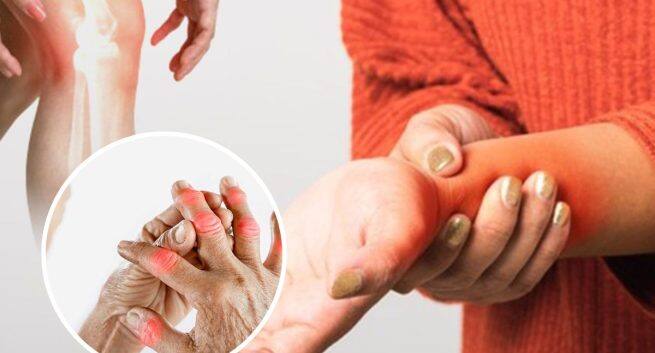"Understanding Arthritis: Early Symptoms and Signs to Look Out For
Key Highlights :

Arthritis is a common condition that affects the joints, causing significant pain and restricting daily activities. In recent years, the incidence of arthritis has been on the rise, with a sedentary lifestyle being one of the main causes. The condition is marked by severe inflammation of the joints, which are the areas where two bones meet, such as the knees, hips, elbows, and shoulders.
The most common form of arthritis is usually found in one or two joints in one individual due to aging. Special genetic and inflammatory arthritis can affect many joints in the same individual. Advanced arthritis might need surgeries like joint replacements. It is essential to identify early so that timely treatment with medications can cure the disease and delay or prevent surgeries.
The main symptom of arthritis is pain in close proximity to the joint-developing arthritis. In the lower limbs, the pain gets aggravated by weight bearing. Pain gets worse with walking on uneven surfaces, and climbing the stairs. Walking distance gets reduced with time and deterioration of arthritis. Muscle spasms (cramps) above and below the affected joint are also an indication of arthritis. These muscle spasms typically happen at rest and therefore should not be ignored.
Stiffness is another common symptom of early arthritis and is due to inflammation of the synovial membrane lining the joint. Swelling of the joints is a frequent symptom in early arthritis and is due to effusion (fluid collection) secondary to inflammation. In advanced arthritis, swelling can be due to effusion or due to significant deformity or osteophytes (new bone particles) formation. Deformity (change in shape) of the joints is usually a late sign of advanced arthritis. For example, in the knees, arthritis can cause knock knees or bowing of the legs.
There are some genetic and inflammatory arthritis diseases that can affect the young age group. These diseases should be identified early so that timely intervention with appropriate medication will control the disease progression and delay the destruction of the joint. Genetic mutations can cause Rheumatoid Arthritis (RA). It is an inflammatory arthritis due to HLA DR4 and DR1 factors affecting many joints in the body. RA can affect many individuals within the same family and also the successive generations. This disease usually starts in the small joints of the hands but subsequently affects the major joints in the rest of the body. Pain, swelling, early morning stiffness, skin nodules, and gradual deformity of the fingers are the symptoms of rheumatoid arthritis which are similar to aging arthritis as well. Other systems in the body like the lungs, kidneys, and eyes are also affected by RA.
Psoriatic Arthritis is another inflammatory arthritis similar to RA. In Psoriasis, there can be skin lesions with shiny scales, fingernails pitting, and sometimes excessive dandruff. It is essential to identify psoriasis early to prevent damage and destruction of articular cartilage. It is a genetic disease due to the HLA B27 factor. The symptoms and signs of arthritis in Ankylosing Spondylitis (AS) are similar to any other arthritis. In AS, pain, and stiffness in the spine are more common than in other arthritis.
One should not ignore the early symptoms and signs of arthritis. It is essential to seek early treatment for arthritis so that daily activities are not compromised and delay the need for any major surgeries. With the right diagnosis and treatment, it is possible to manage the condition and prevent further deterioration. If you experience any of the signs and symptoms mentioned above, it is best to consult a doctor immediately."
